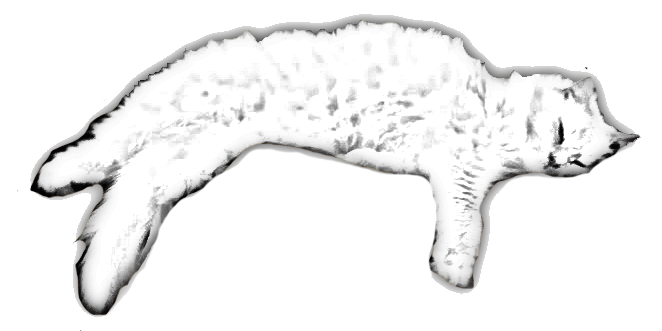Step into the enchanting world of long-haired indoor cats, where the allure of their mysterious beauty beckons us to uncover the secrets they hold. With their luscious coats and captivating personalities, these feline beauties have captivated our hearts.
But what lies beneath their majestic appearance? In this article, we embark on a journey to explore the origins, characteristics, and proper care of these magnificent creatures.
Get ready to unravel the hidden wonders of long-haired indoor cats.
The Allure of Long-Haired Indoor Cat Breeds
We can't resist the charm of these enchanting long-haired indoor cat breeds.
The advantages of owning long-haired indoor cats are plentiful. Firstly, their luxurious coats provide a sense of elegance and sophistication, making them a delight to gaze upon. Additionally, their long fur acts as insulation, keeping them warm and cozy during colder seasons. Their coats also require regular grooming, which provides an opportunity for bonding and nurturing.
Popular long-haired indoor cat breeds include the majestic Maine Coon, known for their large size and tufted ears, and the regal Persian, with their expressive eyes and distinctive flat face. The Norwegian Forest Cat, with their thick, water-repellent fur and tufted paws, is another favorite.
These breeds not only offer beauty and grace but also make excellent companions for those seeking a touch of enchantment in their lives.
Exploring the Origins of Long-Haired Indoor Cats
Long-haired indoor cats have a fascinating history that dates back centuries and spans across different regions of the world. Have you ever wondered how these beautiful creatures came to be? Let's delve into the origins of long-haired indoor cats and uncover the secrets behind their luxurious coats.
- Evolutionary adaptations: How did long-haired cats evolve to have such stunning fur?
- Breeding practices: Were these cats selectively bred for their long hair or did it occur naturally?
- Crossbreeding and hybridization: Did different breeds contribute to the development of long-haired indoor cats?
- Influence of geographical location: Did the climate and environment play a role in the evolution of their long hair?
Characteristics and Temperament of Long-Haired Indoor Cats
As cat lovers, we're fascinated by the unique characteristics and temperament of long-haired indoor cats. These majestic creatures have behavior patterns that set them apart from their short-haired counterparts.
Long-haired cats are known for their calm and gentle nature. They're often more tolerant and patient, making them great companions for families with children. Their luxurious coats require regular grooming, which can be seen as a bonding activity between the cat and its owner.
Long-haired cats also have a preference for certain environments. They enjoy cozy and warm spaces where they can curl up and relax. These cats thrive in quiet and peaceful homes, where they can feel safe and secure. Providing them with a comfortable and stimulating environment is essential to their overall well-being.
Proper Grooming and Maintenance for Long-Haired Indoor Cats
Regular grooming is essential for maintaining the health and appearance of our long-haired indoor cats. But what're the best grooming techniques to keep our feline friends looking their best? And how can we prevent those dreaded hairballs? Let's explore some tips and tricks to ensure our long-haired companions stay happy and healthy.
- Brushing: Regular brushing helps to remove loose hair and prevent matting. Use a slicker brush or comb specifically designed for long-haired cats.
- Bathing: While not necessary for all cats, some long-haired breeds may benefit from occasional baths to keep their coats clean and free from dirt and oils.
- Trimming: Regularly trimming your cat's fur, especially around the rear end and paw pads, can help prevent matting and keep them comfortable.
- Hairball prevention: To minimize hairball formation, consider using hairball prevention treats or adding a little pumpkin or fiber to their diet, which aids in digestion and helps hair pass through their system.
Health Considerations for Long-Haired Indoor Cat Breeds
We should also consider the health implications for long-haired indoor cat breeds, as they may have specific needs and potential health issues that require attention. These beautiful feline beauties often require extra care due to their long, luxurious coats.
One possible health issue that may arise is matting of the fur. The dense and silky nature of their fur makes it prone to tangling and forming mats, which can be uncomfortable and even painful for the cat. Regular grooming and brushing are essential to prevent this.
Additionally, long-haired cats may be more prone to hairballs, as their fur tends to shed more. Ensuring a proper diet that includes specialized hairball control formulas can help alleviate this issue.
It's important to consider these dietary needs and possible health issues to keep our long-haired indoor cats happy and healthy.
Conclusion
Unveiling the enigmatic allure of long-haired indoor cats has been a captivating journey. From unraveling their origins to understanding their unique characteristics and temperament, we've delved into the secrets of these feline beauties.
Proper grooming and maintenance play a crucial role in keeping their luscious coats pristine, while health considerations ensure their well-being.
These mysterious creatures continue to fascinate us with their elegance and grace, making them truly captivating companions for those who appreciate their ethereal charm.




0 Comments